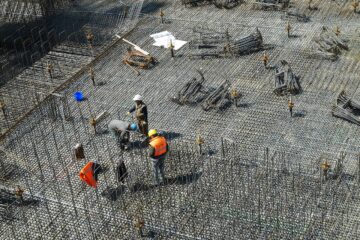![]()
Introduction:
Godrej and Boyce is a manufacturing company that manufactures locks, extended durables like refrigerators, washing machines, air conditioners, etc. Godrej has bought land on permanent lease in a village in Maharashtra for manufacturing all the goods and also for a residential purpose to accommodate its staff. The Government of Maharashtra passed an act where it claims that any land bought under a permanent lease for cultivation before 14/08/1951 shall belong to the State. Godrej was not happy with the government’s decision and filed a Petition in the High Court of Bombay. This case study will tell the events of the case during the years and discuss the amendments to the Acts.
Facts
The Godrej Company has gained plot in a village Vikhroli in sub-division district Salsette in the Maharashtra through registration of conveyance deed on 30/07/1948 from a person who was a successor of one more individual for whom the Maharashtra Government gave the land on permanent lease on 07/07/1835. They considered and gave the land (waste land) on lease, and the purpose of the lease was to cultivate the waste land. This wasteland admeasures 133 acres and 38 guntas. For convenience, we refer to this land as the “disputed land”.
The Bombay legislature on 27/08/1951 that became operative from 01/03/1952 passed Salsette Estates. S.4 of the Act states that any waste land not taken under cultivation before 14/08/1951 for permanent lease shall belong to the state. Therefore, the State contended that the disputed land belongs to Maharashtra. Godrej challenged the said Act in the High Court of Bombay by stating that the provisions cannot be applied because they bought the disputed land for industrial purposes. The Bombay High Court held that leaving an area of 31 guntas the remaining plot is brought by Godrej for refinement before 14/08/1951. Therefore, the land belongs to Godrej.
A growth plan for the Bombay city was issued twice, once on 07/01/1967 and second time in 1991. The disputed land was entitled as Residential in both the plans for the growth of the city which mean that the Bombay government has acknowledged that the disputed land was taken for refinement before 14/08/1951 by Godrej. After the plans for the development of the city were issued, Godrej built four residential buildings after obtaining all the permissions for its staff.
On 17/02/1976, the Urban Land Ceiling (Ceiling Regulation) Act, 1976 became operative. The disputed land exceeded the maximum limit constituted by the act so Godrej sought exemption for developing the extra land for residential and industrial purposes from the authorities and authorization was given with few conditions.
Chapter V of Indian Forest Act, 1927 which deals with regulation of forests and lands which do not belong to the Government was amended thrice during this time. The 1st amendment was in the year 1948 by the Indian Forest (Bombay Amendment) Act, they are:
- the word “forest” has been defined by inserting S.34A in the Act,
- S.35(1) of the Act was substituted with safeguarding forests for special purposes, including controlling and prohibitory measures, and
- the words ‘wastelands’ or ‘land’ used in S.35 (2) and S.35(3) of the Act were deleted.
The second amendment was in the year 1955 by the Indian Forest (Bombay Amendment) Act, the changes made were:
- S.35(3) of the Act was amended,
- S.35 (4), S.35 (5) and S.35 (6) were inserted in S.35 of the Act, and
- S.36A was inserted in the Act which deals with how a notice and order must be served under S.36
The third amendment was in the year 1960 by Indian Forest (Bombay Amendment) Act, the changes made were:
- “six months” was replaced with “one year” in S.35(4) of the Act, and
- S.35 (5A) and S.35 (7) were inserted in S.35 of the Act
A notice was given to Godrej under S.35 (3) of the Act according to the amendment and was published in the Government Gazette on 06/09/1956 in connection with the disputed land about which Godrej was not aware until 08/01/1962. When Godrej found the notice from the Department of archives, the notice didn’t bore any date and Godrej stated that notice was by no means assisted and operated upon. A question arises here whether a notice was ever issued and served to Godrej.
In 1975, the State Assembly passed Maharashtra Private Forests (Acquisition) Act. The Act defines the words “forest” and “private forest” under S.2 (c-i) and S.2 (f) respectively. According to S.2 (c-i), “forest” means a piece of land that is present with trees, shrubs, bushes. Such trees can be present by natural growth or planted by humans. According to S.2 (f) “private forest” defines any forest that does not belong to the Government.
Therefore, it can be concluded that after the notice was put out in the Gazette, it was operated neither under Forest Act nor under Private Forests Act. The state didn’t take any steps to take over the ownership of the disputed land and on top of that authorizations were given to Godrej every time they asked for the constructing the buildings on the disputed land. The permissions sought by Godrej were for the benefits of its workers.
Issues
1. Whether the issuance of a notice under the provisions of Section 35(3) of the Indian Forest Act, 1927 is sufficient for any land being declared a “private forest” within the meaning of that expression as defined in Section 2(f) (iii) of the Maharashtra Private Forests (Acquisition) Act, 1975.
2. Whether the word “issued” in Section 2(f) (iii) of the Maharashtra Private Forests Acquisition Act, 1975 read with Section 35 of the Indian Forest Act, 1927 must be given a literal interpretation or a broad meaning.
3. Whether a State is allowed to demolish the massive constructions made thereon over the last half a century
Proceedings in the High Court
Godrej received notices for stoppage of works from the concerned authority of Municipal Corporation of the State somewhere around 24/05/2006, stating that disputed land was “affected” by the registration of a private forest and as a result construction cannot be continued without the consent of the Central Government under the Forest (Conservation) Act, 1980.
The notices for stoppage of works were given because of a PIL in High Court, Bombay Environment Action Group v. State of Maharashtra where the petitioner claims that the revenue accounts of the state are incomplete because of which a huge amount of difficulties are being faced. Therefore, the High Court gave a direction to the state to update all the revenue accounts by 31/05/2006. Godrej filed a writ petition in the High Court pleading for an announcement that the lands held by Godrej are not forest lands and that the notices served are to be affirmed as illegal.
High Court Judgement and Rationale
The writ petition was argued by the State and it was submitted inter alia that in observation of the decision of this Court in Chintamani Gajanan Velkar v. State of Maharashtra[1], the disputed land is vested upon the State with respect to S.3 of the Private Forests Act. Therefore, by referring to Chintamani’s judgement, the High Court discharged all the writ petitions on 24/03/2008. The petitioner argued that the erection of buildings took place in accordance with the plans sanctioned by the government and approvals from the concerned authorities. For this argument, the court said that State’s action in these petitions deprived any authority of law and also stated that the arguments today have no legitimate foundation.
The High Court further said that the petitioner cannot say that the notices haven’t been served because once the government issues the notice then it means that the government’s intention was clear to control and forbid a few events. The court also said that, just because a notice was given and but did not act upon it doesn’t mean the State has ignored the notices. Legislations which are destined for shielding and conserving forests and attain higher public attention can’t be understood closely as opposed. The understanding, therefore, must eliminate any vagueness or possibility for construction has to be extensive and attending this public concern so also the intent and object in passing them.
The High Court of Bombay dismissed all the petitions. Godrej was not satisfied with the decision of the court and filed for special leave to appeal in the Supreme Court.
Supreme Court Judgement and Rationale
The first question is whether the disputed land is a forest within the meaning of Section 2(c-i) of the Private Forests Act. The answer is no, the disputed land is not a forest under S.2 (c-i) of the Private Forests Act. The disputed lands are being built from time-to-time either for residential or industrial purposes. The Court held that as per Janu Chandra Waghmare v. State of Maharashtra [2] the “means and includes” definition of forest in Section 2(c-i) of the Private Forests Act does not weaken or take away from the primary meaning of the word ‘forest’. The words in an Act must be construed literally. But having said that if the context in which a word is used and the clauses of an act inevitably propose an implication other than literal, then the context becomes significant.
In R.L. Arora v. State of U.P.,[3] it was observed that “a literal construal is not at all times the only construal of a clause or a section in an Act and the Court has to see at the context in which the words are used and the situations in which the law was passed to decide whether there is something inherent behind the words in fact used which would control the literal meaning of the words used in a clause or section of an Act.”
The main purpose of issuing a notice under S.35 (3) of the Forest Act is to give a chance to the possessor of the forest to put forward his view about why such notice shouldn’t be served. The possessor is given a reasonable duration to file the objections. The entire procedure of trial can only be done when the notice is served to the possessor therefore, issuance of notice is compulsory. In this case, the notice was not provided to Godrej and while they were developing the land no objections were placed by the State.
The Court said that, in the first place, the State was not interested in taking any action on the show cause notice for several decades. This view is stimulated by a sequence of actions that took place between 1957 and 2006, Starting with the consensus judgement of 8th January, 1962 where the disputed land was acknowledged as not a forest land; authorization to build a huge number of houses according to the Development Plans of 1967 and then of 1991; exceptions granted by the Competent Authority under the Urban Land (Ceiling and Regulation) Act, 1976 leading to Godrej making unconstrained but approved constructions; and lastly, the lack of any effort by the State to take ownership of the ‘forest land’ under S.5 of the Private Forests Act for so many years.
The subsequent question is whether the unspoken verdict of the State to take over the so-called forest land can be successfully applied.
The pronouncement of the State suggests the destruction of a large number of residential buildings, industrial buildings, commercial buildings, in which people may have financed extensive savings in the disputed lands. It also suggests the destruction of the municipal and other public infrastructure works which were previously undertaken and in use, clearing away the remains and then planting trees and shrubs to bring back the forest to an acceptable condition is not possible. The State says that it is easily attainable but in fact it is very difficult. According to the Bombay Environment Action Group, a patent, incurable illegality has been committed and the natural significance must follow.
This principle was practically applied in one of the cases where authorization was granted to convert a Kalyana Mantap-cum-Lecture Hall into a cinema hall. The judgement says that no extra construction took place to convert a Kalyana Mantap to a cinema hall therefore; the question of compensation does not arise.
Holding
The Supreme Court held that all the appeals filed by the petitioners are accepted by stating the above reasons and the judgement and decree of the High Court of Bombay are set aside and all the notices given by High Court are quashed.
Conclusion
The appeals raise a huge number of issues in good administration of the State and State has failed in good administration. The State performed in a negligent manner by not taking proper measures in serving the notices. The State was prepared to bear a lot of losses by creating a forest in a residential area, which was an illogical move taken by the government. The State must make sure that in future no such disputes arise again and the state must act immediately to a dispute.
References:
[1] II (2000) SLT 297
[2] AIR 1978 Bom. 119
[3] (1964) 6 SCR 784



0 Comments